
Packaging Europe canvassed opinion on the trends and technologies that will characterise CPG and retail packaging over the coming year. A diverse group of industry authorities passed around our crystal ball. Here is what they foresaw.
Sustainability continues to drive innovation
Carolina Gregorio, lead marketing manager for Food Packaging at DOW Europe
Less is More! There is a clear trend due to the need for sustainable packaging as well as cost efficiency to optimise packaging materials without compromising food and beverage products. Also the developments of more efficient conversion rates and packaging equipment offers many options now to reduce energy use during the packaging process. Using fewer materials and less energy during packaging production, for higher performance packaging materials without compromising packaging integrity is key.
Meanwhile, moves to make it easier to recycle flexible packaging will be a key driver. Advancing a circular economy in flexible packaging is a clear trend as well as a challenge: keeping food and beverages arriving fresh to our tables implies increasing use of more sophisticated multilayer packaging solutions. Work in areas such as barrier adhesives and compatibilisers (offering producers the option to recycle their scraps) will be important elements in this drive.
Upcycling
Steve Adams, managing director at James Cropper
With the luxury market forecast to grow and the sustainability agenda quite rightly high in society’s priorities, we expect ‘upcycling’ to take the spotlight as something that combines the environmentally friendly with the premium. For example, we’re collecting used cups from Selfridges’ food hall and offices, processing them at our plant and using the resulting high quality material to create their iconic yellow shopping bags – a unique, closed-loop solution. Arrangements like this help businesses to enhance their brand value by demonstrating their commitment to sustainability, while upholding their premium appeal.
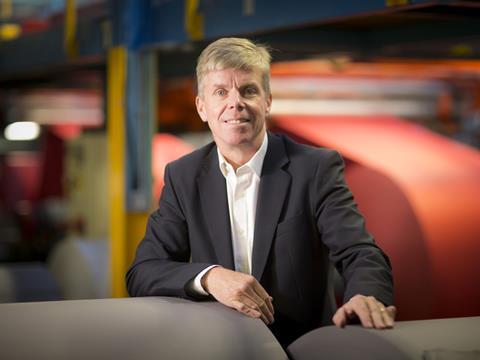
Direct to shape
Simon Edwards, VP sales and marketing at Tonejet
Direct-to-shape digital printing for packaging has generated some of the most interesting and thought-provoking discussions over the last 12 months, and it’s certainly one-to-watch as we look ahead to growth markets in 2018.
It serves two key market sectors in my opinion. The first being the mass market where packaging is produced for the average consumer for average reasons, but the need for small job runs is still an issue due to segmentation or proliferation of the variety of images or languages required on the product packaging. Digital printing is used in this case to free up valuable packaging real estate and produce variations of the same package for different markets or regions. The second market sector for direct-to-shape is speciality applications. This is when brands utilise the capabilities of digital printing to produce packaging for promotional or event-based activities. The objective of these activities is to bolster the brand rather than generate huge amounts of revenue. It’s an opportunity to grow or maintain market share through brand awareness, often strongly supported by resulting social media conversations and, in 2017, we’ve seen more and more brands realise the value in this activity and create their own campaigns.

What’s exciting about the year ahead for direct-to-shape is that the technology being developed for this area is really coming into its own. Until now, we’ve seen companies talk about direct-to-shape machines for aerosol cans, plastic tubes, glass cylinders and beverage cans with some claiming to be able to do it all. While that may be technically possible, in reality the cost base may not make it financially viable. Therefore, we’re now seeing machine manufacturers focus in on one dedicated application for their technology as the market starts to settle. The challenge now will be for these companies to put their hypotheses for these machines’ capabilities into the hands of actual brands and start producing real products. This requires some creativity on the part of the manufacturer to get their first machines to market! But overall, 2018 will be a time for clarity around these solutions. There will be a real focus on market viability for both the user and the consumer and it will be a time for these platforms to prove themselves. Once this has happened, it will lead to a really exciting time for the sector because the manufacturers can then branch out again, applying their new technology to other applications where it can innovate the supply chain and consumer experience once again.
Hybrid print technology
Bert Schoonderbeek, managing director, Contiweb
In 2017 we saw that the world of flexible packaging is further diversifying: while digital printing is becoming more important, however, for wider web applications, it is still a costly way of printing. Printers and converters face growing pressure to slash costs, cut turn-around times and deliver premium print quality, while brand owners want to make regular changes without incurring the expensive set-up costs associated with flexo and gravure. To be able to meet their customer’s demands and high expectations for print quality, flexibility and sustainability, printers and converters are discovering the many benefits of using web offset for packaging work.
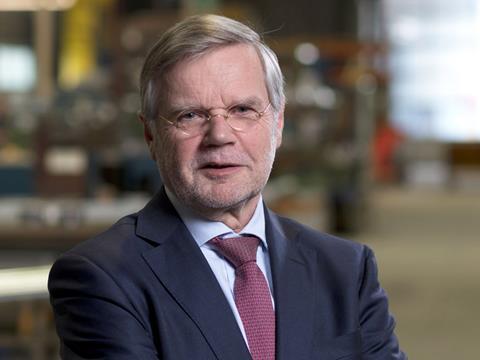
We predict that over the next few years, hybrid technology will become the industry standard. Printers will want to combine all the benefits of web offset with the inherent advantages that flexo, gravure and digital can offer, so a modular inline platform that can be easily adapted should be the key investment for printers who need to meet future changes as market demands become increasingly tough.
Brand brilliance at the intersections
Erich Hoch, EVP and CEO, Jabil Digital Solutions
By now the industry is familiar with major trends such as digitisation, multi-channel retail and sustainability. For example, there are ample opportunities to innovate more secure closures and improve package strength to avoid leakage and breakage during shipping that would most definitely have a negative effect on the end user experience.
Many players are quickly adapting their packaging strategies to address these familiar trends. Less obvious, however, are the unique opportunities for what Jabil calls “brand brilliance” at the intersections where these trends converge.
For example, most brands recognise that online retail outlets are among the growing number of alternative channels to conventional brick-and-mortar stores. But digitisation offers more than an online storefront or mobile app to shop for the same products we can find on a store shelf. It also allows innovative new packaging to leverage ubiquitous connectivity to spark interactions with other consumers, retailers, products and brands.
Similarly, the versatility of plastic packaging may seem to run counter to the rising interest in sustainability. But in many cases, brands are finding unique solutions precisely where these two trends converge. Many are answering the call for more sustainable packaging by making more use of advanced biodegradable and recyclable polymers to allow consumers to feel good about their product and packaging choices while enabling brands to tap all the creative and practical benefits that plastic materials have to offer.
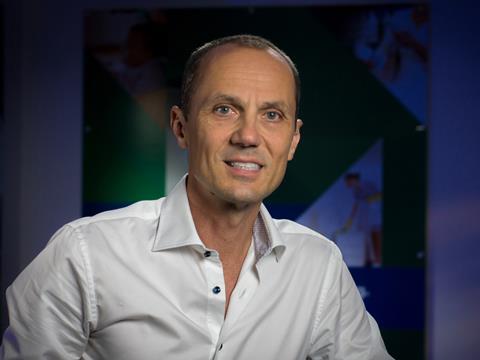
Pack-vertising
Bui Burke (senior VP Sales, Screen)
I predict an increase in ‘pack-vertising’, where product labels are used as a core part of the marketing message. This is increasingly important when there is continued pressure on marketing spend – as has been the case in recent years.
Meanwhile, lead times will continue to shorten. At present, most digital printing companies can offer very quick turnaround of work. However, these have tended to be small jobs and have not really impacted the general industry wide accepted norms. I predict this changing, as more companies install high productivity inkjet digital devices, used for longer runs. The digital e-commerce model, allowing simple on-line ordering and quick delivery, will spread to the wider market.
Brand experience in every box
Ken Chrisman, President of Sealed Air’s Product Care division
With more products being sent directly to homes, the visual and tactile impacts inside a delivery can be a powerful selling point for brands. Logos, photos, and illustrations can be printed on the protective packaging materials or directly on the shipping box or mailer, which can help deliver a brand experience that connects with consumers and further communicates how that brand value is enhancing their lives.
In this way, custom packaging design can reinforce the mission and lifestyle of a company, as well as the lifetime customer value. As companies discover more about their customers, both their shopping and unboxing experiences will become more personalised.
Meanwhile, as the needle moves ever higher on the consumer instant gratification meter, the expectations among online shoppers for speedy, precise, damage-free deliveries have never been greater. In response, retailers are applying pressure throughout the supply chain to deliver products faster and more efficiently. Manufacturers are feeling the added pressure of having to make direct deliveries to customers to help reduce retailers’ inventories. This will only accelerate in 2018. Retailers want to avoid pallets and ensure that products are ready to be shipped at a moment’s notice – and by manufacturers ideally. This will require a wholesale re-working of manufacturers’ business models.
The sweet spot for fresh goods delivery packaging is difficult to hit. How much packaging does it take to maintain proper temperatures, and how much wiggle room (i.e. hours spent in the back of a delivery truck from processor to retailer, or unprotected from the elements at a front door) can any box, bag, or cooler handle? How can processors and retailers keep material and shipping costs low without letting temperatures rise? As food manufacturers and retailers test the waters of food e-commerce operations, commercial validity is paramount. To help assure this, a combined primary and secondary packaging operation is fundamental.
As a result, more stringent industry standards and regulations will be required to help ensure food freshness and protect consumers. It will be vitally important that businesses track these updates and proactively look for solutions that can help with the transport of fresh goods.
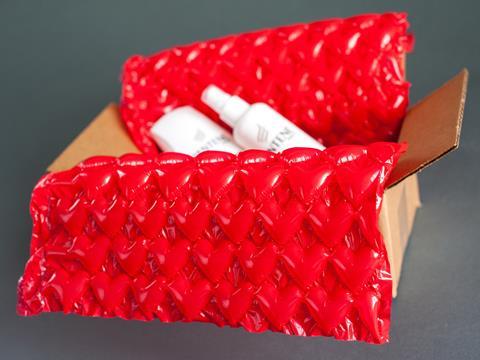
Style AND substance
Jason Poxon, Packaging Technologist at Antalis
With online sales continuing to rise year-on-year and less ‘bricks-and-mortar’ shops, the onus is on businesses to take a two-pronged approach - incorporating both substance and style into packaging to create a superior customer experience at home.
Putting in place pioneering void fill and cushioning solutions should be the top priority as it can make a remarkable difference – not only in terms of ensuring products arrive in perfect condition, but also by speeding up the packaging process, optimising overall efficiencies and improving sustainability by minimising the amount of packaging used overall.
At the same time, creating a memorable first impression when a package arrives is now more important than ever before as nearly 40 per cent of the British public admit that colour is the most appealing feature of packaging, while a quarter say that imagery caught their eye the most. This will no doubt fuel the growing popularity of personalisation in packaging as firms battle it out to achieve that all-important ‘wow’ factor.
Active & intelligent
Gillian Ewers, VP marketing, PragmatIC
Whether at home, work or during our leisure activities, we are seeing an increasing amount of technology penetrate our lives. A few years ago, it looked like NFC technology was on the verge of revolutionising the packaging industry and making that ‘smart’ as well, but then the initial hype began to fade away. Now the buzz is back and 2018 seems set to be the year when smart packaging finally starts to reach beyond simply being a ‘cool idea’, and moves closer to becoming an everyday reality.
There have been some interesting NFC campaigns such as the US-based snack company, Frito-Lay, which launched limited edition crisp packets during the Super Bowl. The ‘Party Safe’ bag came with a built-in alcohol sensor which acted as a simple breath analyser, encouraging people to then act responsibly and tap their smartphone to the NFC technology in the bag and summon an Uber ride to take them home.

These market trials, have generally been applied to niche, low volume marketing campaigns or premium products due to the additional cost of embedding the NFC technology. In some cases, this was because a power source was required for standalone operation and printed batteries are still relatively expensive. Yet even in its simplest form, where the energy to operate is harvested from the smartphone signal, the cost is still considered too high for integration into high volume FMCG.
Even as volumes increase, with corresponding decreases in price, a change in approach is required. The SCOPE project aims to help develop new processes to manufacture devices with “costs of less than one cent per NFC tag.” Can this be achieved? New technologies and processes are now emerging that will bring significantly lower costs, not just innovation in integrated circuits which form the brain of the tag, but also how the antenna and tag are assembled. These are exciting times. Low cost NFC technology will become a reality in 2018 – finally making smart packaging economically viable for FMCGs.
Minimalism & transparency
Benjamin Punchard, global packaging insights director at Mintel
Aiming for packaging designs that enlighten consumers’ purchase decisions, brands will reject approaches that offer too much or too little as they can leave shoppers more confused than informed.
Today’s consumers are more informed than ever; however, brands are in real danger of being rejected if consumers feel overloaded with information, leading to the questioning of provenance, authenticity, and transparency. The 'essentialist' design principle bridges the divide between not enough and just enough of what's essential for consumers to make an enlightened and confident purchasing decision. Brands must bring the next generation of clean label to packaging design to provide a moment of calm and clarity for shoppers in an increasingly hectic retail environment.
Meanwhile, bbrands will look to contemporary packaging formats to help reinvigorate the centre-of-store aisles less visited by younger consumers.
Young shoppers are increasingly ‘shopping the periphery’, visiting the fresh and chilled aisles around the store perimeter and turning their backs on processed, ambient, and frozen offerings in the centre of the store. The use of transparent materials, contemporary design, recyclability, or unique shapes can help draw in younger consumers to the store centre, making it as appealing as the burgeoning perimeter to younger consumers.
The on-trend colours from 2018 into 2019
Judith van Vliet, ColorWorks® designer and a leader of the ColorForward team
As far back as 2014, while working on ColorForward 2016, we began to see consumers becoming more introspective and even a little fearful about what was happening in their world. That gloominess, reflected in colours that were muted, softer, darker and even ambiguous, has persisted. Although the palette heading towards 2019 is still toned down and more than a little grey, we see in it a growing sense of resolve and determination to find ways to live happily in our increasingly technical world.
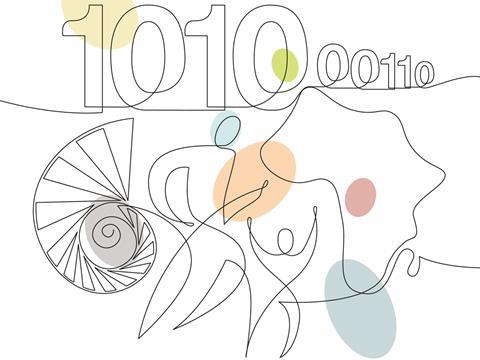
Trends to look out for include:
‘Do not disturb’ – this pastel palette is serene, soft, and minimal, though all but one have a dusty cast that quiets them even further.
‘CTRL+F’ – this story is more fearful, focusing mainly on the apparent loss of control and is represented by ambiguous, enigmatic, and contrasting colours – both light and dark, solid and transparent, with two of the five including a glitter effect.
‘Made in Human’ – in our increasingly technical world, we can still take some comfort and pride in the things that make us uniquely human. One of the colour chips is made by 3D printing – a canvas-beige with a brush stroke of purple symbolising the human creativity in this machine-made artefact. Others include, 'One face, one human race' that is a totally random combination of several colours, making every chip is unique, and yet all are part of the same family.
Umswenko – celebrating the energy and optimism of the 1.1 billion 'Afrillenials'. The colours chosen to represent this trend are not stereotypically African; the brightest of the ColorForward 2019 palettes, yet somewhat toned down, such as the apricot orange 'Tribeat' and the jade green 'La Sape’.





















